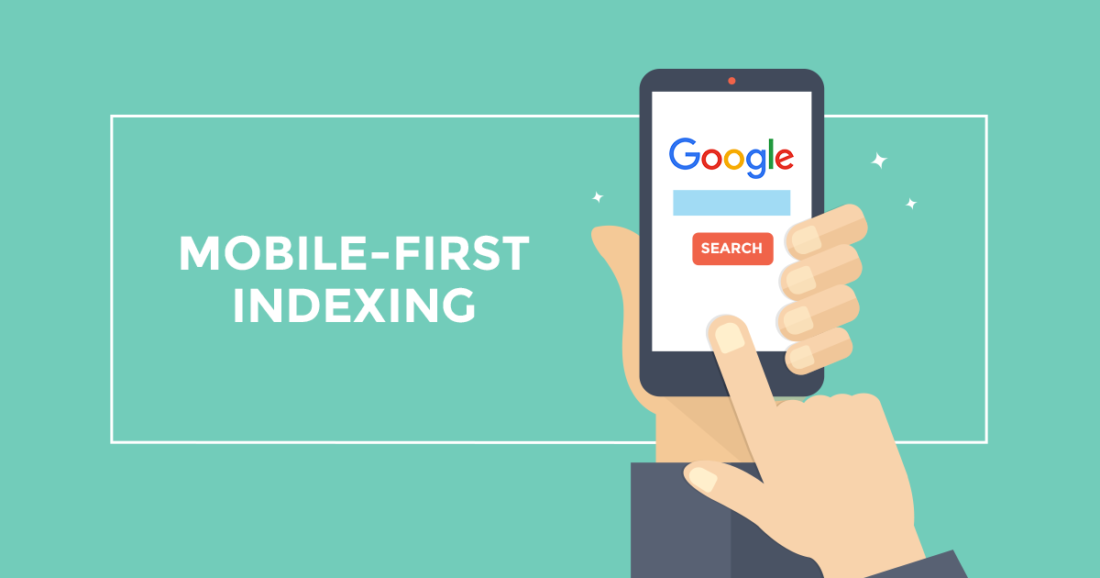
Introduction: Why Mobile-First Indexing Matters in 2025
The digital landscape has undergone a profound transformation over the past decade. Mobile devices now dominate the web, accounting for over 64% of global internet traffic in 2025. Consumers are increasingly searching, shopping, and engaging with content on smartphones and tablets, making mobile experience a top priority for businesses.
Google, as the leading search engine, has adapted by shifting its focus to mobile-first indexing. Websites that are optimized for mobile devices are prioritized in search rankings, while non-optimized sites risk losing visibility. But as mobile-first indexing evolves, so too must SEO strategies.
In this guide, we’ll explore:
- The history and evolution of mobile-first indexing
- Key strategies to prepare for Google’s next moves
- How AI and emerging technologies are influencing mobile SEO
- Common pitfalls to avoid
- Actionable checklists to future-proof your website
Chapter 1: Understanding Mobile-First Indexing
1.1 What Is Mobile-First Indexing?
Mobile-first indexing means Google primarily uses the mobile version of your website for indexing and ranking. Historically, Google crawled desktop versions first. Today, the mobile version is treated as the primary version.
Key points:
- Mobile-first indexing does not mean Google excludes desktop content; desktop content is secondary.
- If your mobile site lacks important content present on the desktop version, it can negatively impact rankings.
1.2 How Mobile-First Indexing Evolved
Understanding the timeline helps anticipate future updates:
| Year | Event |
| 2016 | Google announces experiments with mobile-first indexing. |
| 2018 | Gradual rollout begins; mobile-friendly sites are indexed first. |
| 2020 | Google expands mobile-first indexing to the majority of websites. |
| 2023 | Google completes mobile-first indexing for all new sites. |
| 2024 | Google officially stops indexing non-mobile-friendly sites. |
This demonstrates a gradual but irreversible shift, emphasizing the need for businesses to prioritize mobile user experience.
Chapter 2: The Importance of Mobile Optimization
2.1 Why Mobile Optimization Is Critical
- User Behavior: Mobile users expect fast-loading pages and easy navigation. A delay of even 1-2 seconds can increase bounce rates.
- SEO Rankings: Google’s algorithm favors mobile-optimized sites, impacting visibility and click-through rates.
- Conversions: Mobile-optimized sites generate higher engagement and conversion rates for e-commerce, lead generation, and content consumption.
Research indicates that websites that are mobile-optimized see up to 30% higher conversion rates compared to non-optimized sites.
2.2 Core Elements of Mobile Optimization
- Responsive Design: Ensures content adapts to various screen sizes.
- Fast Page Load Times: Compress images, reduce JavaScript, and leverage caching.
- Easy Navigation: Prioritize thumb-friendly buttons and simplified menus.
- Content Parity: Ensure mobile content mirrors desktop content in text, media, and structured data.
Chapter 3: Technical Best Practices for Mobile-First Indexing
3.1 Implement Responsive Web Design
- Fluid grids: Use flexible layouts that adjust automatically to screen size.
- Media queries: CSS rules allow design adjustments for different devices.
- Dynamic images: Ensure images scale correctly without loss of quality.
3.2 Optimize Site Speed for Mobile
- Lazy loading: Load images only when they appear on the screen.
- Minify CSS & JS: Remove unnecessary code to reduce page weight.
- AMP Pages: Accelerated Mobile Pages can improve speed for news and content-heavy sites.
3.3 Ensure Content Parity
- Verify that all desktop content is present on mobile.
- Include structured data (schemas) on both versions.
- Avoid hiding important information in expandable sections unless necessary.
3.4 Avoid Common Indexing Issues
- URL Fragments: Avoid using “#” in URLs for important pages.
- Pop-ups & Intrusive Interstitials: Google penalizes sites that block content on mobile.
- Flash & Deprecated Plugins: Replace Flash content with HTML5 or other modern alternatives.
3.5 Leverage Google Search Console
- Verify both mobile and desktop versions of your site.
- Monitor mobile usability issues flagged by Google.
- Track Core Web Vitals metrics (Largest Contentful Paint, First Input Delay, Cumulative Layout Shift).
Chapter 4: AI and the Future of Mobile-First Indexing
4.1 How AI Impacts Mobile SEO
- AI tools analyze user behavior to optimize mobile experiences.
- Predictive search optimization helps content reach users proactively.
- AI-powered analytics platforms suggest content adjustments based on mobile engagement metrics.
4.2 AI-Driven Mobile Strategies
- Personalized Experiences: AI can tailor content layout, CTAs, and recommendations for mobile users.
- Automated Testing: AI evaluates mobile usability across multiple devices and screen sizes.
- Voice Search Optimization: Mobile users increasingly rely on voice search, and AI helps optimize content for natural language queries.
4.3 Case Study: AI Optimization for Mobile Indexing
A global e-commerce company leveraged AI tools to analyze mobile user sessions and identify friction points in the checkout process. By restructuring the mobile layout and optimizing content dynamically, the company achieved:
- 25% faster page load times
- 18% increase in mobile conversions
- Higher rankings for 60% of their key mobile landing pages
Chapter 5: Mobile UX Design Principles
User experience (UX) is central to mobile-first indexing. A website that is visually appealing but difficult to navigate will lose users and rankings. Google’s algorithms consider engagement metrics such as bounce rate, session duration, and click-through rate when ranking mobile pages.
5.1 Simplicity and Clarity
- Mobile screens are smaller; cluttered designs frustrate users.
- Focus on clear headlines, concise text, and intuitive navigation.
- Use a single-column layout to guide users naturally down the page.
5.2 Thumb-Friendly Navigation
- Buttons, links, and menus should be easily tappable.
- Maintain a minimum touch target size of 48×48 pixels.
- Avoid placing critical actions near screen edges where accidental taps are likely.
5.3 Visual Hierarchy
- Prioritize important content above the fold.
- Use contrast, color, and spacing to direct attention.
- Incorporate visual cues like arrows and icons to guide users.
5.4 Fast-Loading Interactive Elements
- Optimize images and videos for mobile.
- Avoid heavy sliders or animations that delay content rendering.
- Consider progressive web apps (PWAs) to improve speed and interactivity.
Chapter 6: Mobile SEO Checklist for 2025
To prepare your website fully for Google’s mobile-first approach, implement the following checklist:
6.1 Technical SEO
- Verify responsive design across all devices.
- Ensure canonical tags point to the correct mobile or desktop versions.
- Check structured data implementation for products, articles, and reviews.
- Eliminate broken links and optimize URL structures.
6.2 Content Optimization
- Ensure content parity between desktop and mobile.
- Use readable fonts (16px or larger).
- Optimize images and videos for mobile bandwidth.
- Implement lazy loading to improve speed.
6.3 Performance Optimization
- Monitor Core Web Vitals: LCP, FID, CLS.
- Minify CSS, JavaScript, and HTML.
- Enable browser caching and CDN integration.
6.4 Mobile-First SEO Strategies
- Optimize for voice search queries and long-tail keywords.
- Include location-based keywords for local search.
- Implement accelerated mobile pages (AMP) for content-heavy sites.
- Regularly test mobile usability with Google Search Console.
Following this checklist can significantly improve mobile rankings and user experience, giving your website a competitive edge in 2025.
Chapter 7: Common Mistakes to Avoid
Even experienced SEO professionals sometimes overlook critical mobile-first indexing issues. Avoid these pitfalls:
7.1 Neglecting Mobile Usability
- Not testing your website on multiple devices can lead to navigation and display issues.
- Example: Menus that work on desktop may collapse incorrectly on small screens.
7.2 Hidden Content
- Collapsing content behind tabs or accordions can hurt indexing if not implemented correctly.
- Google recommends progressively enhancing content, ensuring important information is visible in the mobile DOM.
7.3 Ignoring Mobile Analytics
- Desktop analytics cannot substitute mobile metrics.
- Track bounce rate, click-through rates, and session duration specifically for mobile users.
7.4 Slow Page Speed
- Mobile users expect fast-loading pages; a 3-second delay can increase bounce rates by up to 50%.
- Avoid heavy JavaScript frameworks and unoptimized media files.
Chapter 8: Preparing for Google’s Next Moves
Google is continuously evolving, and mobile-first indexing is just one part of a broader SEO ecosystem. Anticipating future trends is key to staying ahead.
8.1 Core Web Vitals 2.0
- Google will increasingly factor user experience metrics into rankings.
- Focus on interactive readiness, smooth scrolling, and layout stability.
8.2 AI-Enhanced Indexing
- Google’s AI is learning to understand context and user intent better.
- Optimize content for semantic search and entity recognition.
8.3 Voice Search & Conversational Queries
- Mobile users rely more on voice search.
- Structure content to answer questions directly, using FAQs and conversational language.
8.4 Emerging Technologies
- Progressive Web Apps (PWAs) and AMP integration improve mobile engagement.
- AI-driven chatbots and personalization improve retention and conversions.
Staying proactive ensures your site remains highly visible, user-friendly, and future-proof in Google’s evolving ecosystem.
Chapter 9: Case Studies and Examples
9.1 E-Commerce Brand Transformation
A leading fashion retailer revamped its mobile website to improve UX, speed, and structured data. Results:
- Mobile bounce rate decreased by 35%
- Conversion rate increased by 22%
- Top 5 rankings for 50% of target keywords on mobile
9.2 Local Business Optimization
A restaurant chain implemented mobile-first SEO with:
- Mobile-friendly menus
- Voice search optimization
- Location-based schema
Results:
- 50% increase in mobile search traffic
- Higher engagement from local users
- Improved Google Maps visibility
Chapter 10: Future-Proofing Your Mobile SEO
To ensure long-term success:
- Regularly audit your mobile site for speed, content parity, and usability.
- Stay updated with Google’s guidelines, especially regarding AI-driven indexing.
- Integrate analytics tools that provide mobile-specific insights.
- Test new technologies like PWAs and AMP to enhance mobile performance.
- Focus on user-centric design, not just SEO compliance.
Future-proofing mobile SEO is about combining technical excellence with exceptional user experience. Businesses that achieve this will dominate search results for years to come.
Conclusion
Mobile-first indexing is no longer optional—it’s the standard for digital visibility in 2025. Preparing for Google’s next move requires:
- Optimizing mobile UX
- Ensuring content parity
- Monitoring performance metrics
- Leveraging AI and emerging technologies
By following the strategies outlined in this guide, your website can achieve:
- Higher search rankings
- Increased mobile traffic
- Better user engagement
- Greater conversions and ROI
The future is mobile-first. Businesses that act today will reap the rewards tomorrow.





